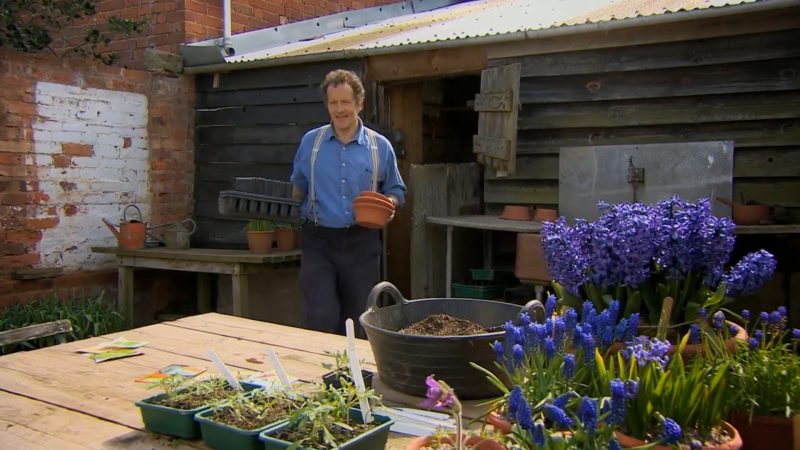In Gardeners World episode 7 2016, Monty gets his new vegetable garden underway by making raised beds. He also offers advice on how to cut back herbs. Nick Bailey marks the 400th anniversary of the death of William Shakespeare when he investigates the fact and the fiction behind the bard’s potions and poisons at the Chelsea Physic Garden, and we visit Pashley Manor in east Sussex to unearth the story behind the planting of over 25,000 tulips.
In Gardeners World episode 7 2016:
Tulip Mania
Tulips arrived in England in the late 1570’s. Their genetic instability meant that the flowers were immensely variable and as a result quickly became highly sought after.
Unknown to people at the time tulips also suffered a remarkable effect caused by a virus, which resulted in unpredictably different colour stripes on the flower petals. This created a huge demand for these ‘rare’ colour stripes, particularly in Holland where the spoils of the Dutch spice trade meant that the rich had so much money they had begun to run out of things to spend it on!
The resulting frenzy became known as ‘Tulipomania’ where people speculated on tulip bulbs, buying and selling many times at ever-increasing prices, the price of the bulbs often tripling by the day. And this was before anyone had even seen what the flowers would be like! Tulipomania reached its height in 1637 when one bulb of ‘Semper Augustus’, a white flower with red flames, sold for 20,000 florins, the equivalent of 24 skilled workers’ annual salary.
The market collapsed abruptly in 1637 but tulips remained popular despite the crash. However, they never again reached such frenzied heights.
Growing Skirret
Skirret tastes like a cross between a carrot and a parsnip with a hint of pepper, and is commonly known as the perennial parsnip. It’s a perennial vegetable, which means it doesn’t have to be sown from seed each year.
It is thought to have been introduced to the UK by the Romans and was a very popular vegetable from medieval to Tudor and Stuart times used in both sweet and savoury dishes with recipes such as ‘Skirret Pye’ (recipe below). These days skirret can be eaten raw, grated in salads, roasted in olive oil and they also make a great soup. It fell out of favour with the introduction to this country of the the potato, which proved easier to harvest and prepare.
Once established it’s an unfussy vegetable and relatively pest and disease free. If growing from seed, sow between February and May. Germination is erratic so be prepared to wait some time for all the seeds to germinate. Alternatively buy year-old crowns, similar to the one Monty planted in his new vegetable bed, and plant with the growing tip at surface level, 30cm apart, with the roots spread out.




